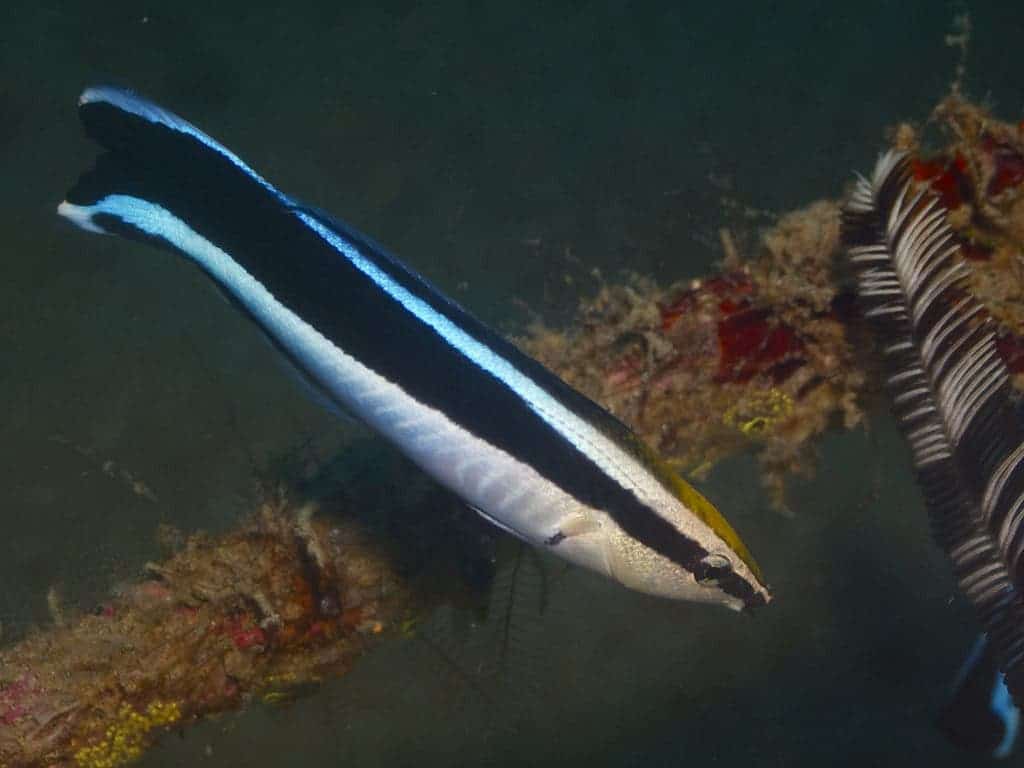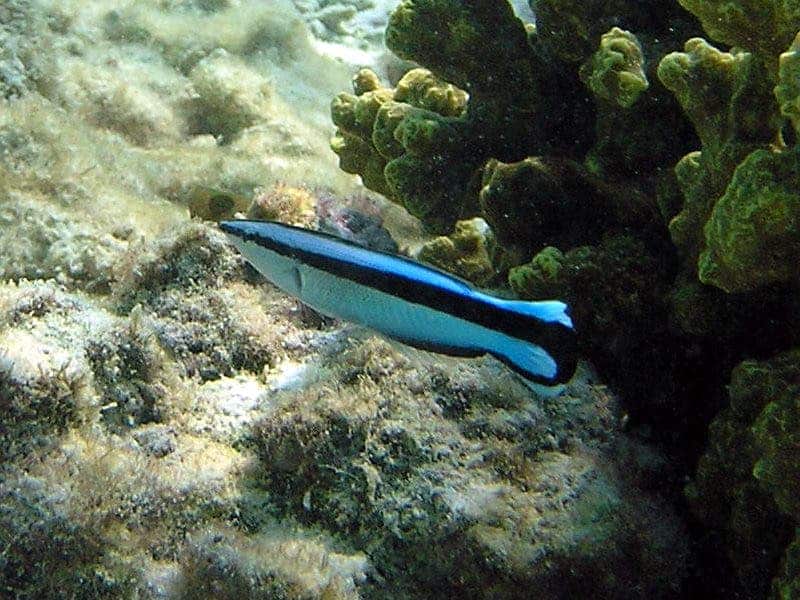Another animal passes the mirror test — surprisingly, this time it’s a fish. The mirror test is a classic experiment used to determine animal self-awareness that only a handful of species have passed.

A paper published by an international research team suggest that there might be more to the mind of the cleaner wrasse than we’d suspected. This tiny, unassuming tropical fish has just joined the few creatures that seem able to recognize their own reflection, the team writes.
Self-reflection
The mirror self-recognition test (MSR) was first used during the 1970s by psychologist Gordon Gallup. Gallup presented the mirror to a group of adolescent chimpanzees, who — having never seen a mirror before — initially treated the images they saw as threats. After some time, however, they started shifting their behavior. In time, they learned that the mirror showed them a reflection of their own bodies, and so started to use them to groom or inspect themselves.
Gallup concluded that this change in behavior requires some level of self-awareness, a mental model of their own body as distinct from friends, foes, or other parts of the environment. The mirror test thus imposed itself as a key tool for researchers studying animal self-recognition.
The golden standard relies on the animal reacting in an unusual manner towards a novel feature of their body seen in the mirror. For example, if you see a spot of paint on your forehead in the mirror, you’d try to wipe it off. You do this because you recognize your face as being your own and because you can recognize the paint as not being ‘you’.

Since the 1970s, a few other animal species, usually mammals or birds, have passed the test as well. These range from ants to elephants (you can see a full list here). Some of these results, however, are still debated: manta rays, for example, acted oddly in front of mirrors, suggesting there was some sort of awareness behind their actions, but nothing conclusive could yet be determined. Many animals we consider social and intelligent, such as dogs, cats, or octopuses, have routinely failed the mirror test. Even humans often struggle with it, with some cultures not passing until six years of age or older.
The team, with members from Japan, Germany, and Switzerland, settled on the cleaner wrasse (Labroides dimidiatus) for their experiment as it has good vision and for its ability to spot parasites on other fish — both of which make it ideally suited for MSR-type tests. The team placed 10 fish in individual tanks outfitted with a mirror.
Being highly territorial animals, the fish at first attacked the mirrors, perceiving their reflection as intruders. Their attitude soon changed, however: within a few days, the fish were actually dancing in front of the mirrors, the team notes. This easily qualifies as ‘unusual’ behavior for the species, which tends to be solitary.
Next, the researchers placed a spot of colored gel on eight of the fishes’ heads in a position where they’d only be visible in the mirror. Seven of the fish spent ‘significantly more’ time in positions where the gel was visible in their reflection, the team writes. Several of them went on to spend more time than before trying to scrape the area against objects in their environment, the researchers add.
While the results suggest that the wrasse could perceive the images in the mirror as their own reflection, and the gel tests seem to indicate that they can notice outside changes to their bodies, the paper has sparked its own bout of debate. Some critics have pointed out that its possible the wrasse viewed the blobs as parasites on the skins of other fish, and not as being on their bodies at all.
Should the findings be confirmed, however, it would be an exciting development. Wrasses have relatively simple nervous systems, and we tend to associate self-awareness with complex brains. Not only would it be exciting to see self-awareness develop on such restrained ‘hardware’, but also to understand what that difference means in terms of how the fish experience self-awareness.
The paper “Cleaner wrasse pass the mark test. What are the implications for consciousness and self-awareness testing in animals?” has been published in the preprint server bioRxiv.


